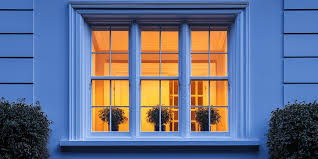In architecture and home design, true authenticity often lies in the smallest details. While modern construction favors large, single sheets of glass for maximum light and minimal maintenance, it’s a departure from centuries of building tradition. For homeowners aiming to capture the timeless elegance of a Colonial, Georgian, or Craftsman-style home, the feature that makes all the difference is the muntin window.
These narrow strips of material that divide a window into smaller glass panes—often called muntins or glazing bars—are far more than just decoration. They are a historical necessity that transformed into a defining architectural element.
A History of Necessity and Craftsmanship
The traditional design of divided-lite windows wasn’t a choice of style; it was a matter of practical technology. Before the industrial age, producing large, blemish-free sheets of glass was either impossible or prohibitively expensive. Window makers had to utilize smaller, more manageable pieces of glass, which were then held together and stabilized by the thin strips of wood or metal known as muntins.
This original construction method is known as a True Divided Lite (TDL). In TDL windows, each small pane (or “lite”) is an individual piece of glass held in place by the muntins and putty. This process inherently added rhythm, texture, and scale to a home’s façade.

Why Muntins Are Critical for an Authentic Look
A large, uninterrupted pane of glass immediately signals a modern or contemporary structure. Conversely, windows with muntins are the visual shorthand for historical or classic design.
1. Architectural Integrity and Historical Accuracy
For restoration projects, or for any style-conscious home, muntins are non-negotiable.
- Period Styles: Muntin patterns define specific eras. A Colonial home, for example, typically features a balanced 6-over-6 grid, while a Craftsman-style home might use a more functional, top-heavy pattern with smaller lites on top and larger ones below.
- Scale and Proportion: The size and profile of the muntins dramatically impact the window’s visual weight. Authentic, historic muntins are often surprisingly narrow—sometimes less than $3/4$ inch—to minimize obstruction while creating sharp shadow lines. Restoring or replicating these narrow profiles is key to achieving a genuinely old-world look that modern, bulky grids simply can’t match.
2. Adding Texture and Depth
A flat, single sheet of glass can look stark. The presence of muntins breaks up the surface, adding a crucial layer of texture and visual interest to the exterior. The muntin’s profile creates subtle shadow lines and depth, making the window appear more dimensional and handcrafted. This detail significantly boosts a home’s overall curb appeal, providing a sense of craftsmanship and tradition.
3. Preserving the “Feel” of Historic Glass
True Divided Lites, particularly when paired with traditional or slightly textured glass, capture the unique way light used to refract through older panes. This subtle visual effect cannot be replicated by looking through a single, modern sheet of glass. The multiple divisions create a dynamic play of light and shadow, essential for preserving a building’s historic charm.
Understanding Your Options: Authentic vs. Simulated
While True Divided Lites (TDL) offer the highest level of authenticity and preservation value, they also come with a higher cost and maintenance requirement (since you have more edges to seal and clean).
Modern manufacturing offers excellent alternatives to achieve the aesthetic without the traditional upkeep:
| Muntin Type | Description | Best For |
| True Divided Lite (TDL) | Separate, individual panes of glass held by the muntin structure. | Historic preservation, ultimate authenticity. |
| Simulated Divided Lite (SDL) | A single sheet of glass with muntin bars permanently affixed to the interior and exterior surfaces. | Authentic look with modern energy efficiency. |
| Grilles Between Glass (GBG) | Decorative grids enclosed between the two panes of insulating glass. | Low maintenance, good appearance, lower cost. |
For homeowners prioritizing a truly authentic appearance—especially in historic districts or with high-end architecture—the SDL option is often the preferred choice, as it convincingly mimics the three-dimensional depth of a TDL while maintaining the energy performance of a modern insulating glass unit.
In the end, muntin windows are a powerful visual feature. They link modern construction to historical styles, adding a layer of architectural sophistication and ensuring that your home’s exterior tells a story of enduring design and timeless quality.



